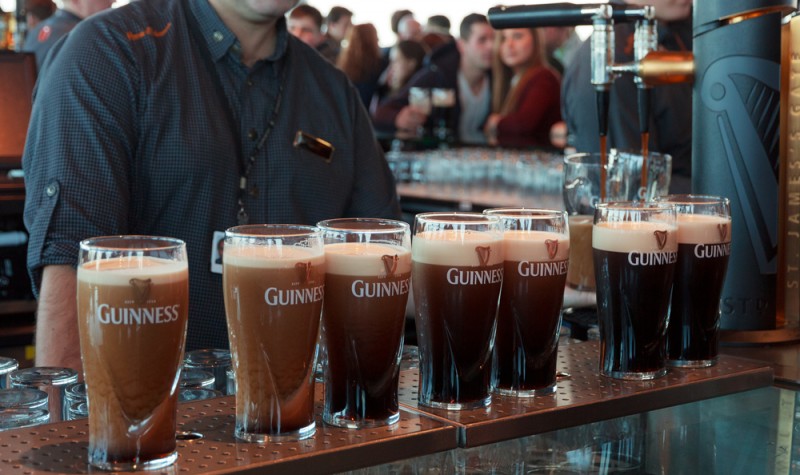Is the M&A machine right to be intoxicated by Diageo?

On Monday the M&A rumour mill, which has been in overdrive since the year began, spat out reports, based on a 40 word Brazilian blog, that three of the Brazilian backers of Anheuser-Busch InBev were considering a bid for Diageo.
Of course, such reports sent Diageo’s stock jumping by just shy of 7%, with continued gains on Tuesday prompted by the news that 3G Capital had hired lawyers to look into the deal, pushing the stock to just shy of £19. Whether this deal would be from 3G itself or Anheuser supported by 3G is unclear; however this is just the latest in a long line of Diageo takeover rumours with the beverage giant obviously a hot property.
So what kind of health is Diageo in? Does it still have its fizz, or has it gone flat?
Firstly, it should be noted that 3G Capital likely wouldn’t be considering the stock if it didn’t think something special lurked at its centre. The company has played a role in the recent successes of Burger King, Kraft and Heinz, be it on its own or in partnership with another company like Berkshire Hathaway, and this past form implicitly points to worth in Diageo.
Of course, you just need to take a look at Diageo’s own brand list to see the mega-assets it has on its books. Look at your average spirits aisle at the supermarket and it will be dominated by Diageo. Johnnie Walker Scotch sees its top 10 countries comprise less than half of the brand’s sales, whilst Smirnoff Vodka has begun to return to growth after a disappointing 2014 in the USA. Ciroc has a lot of room to grow beyond the USA, which makes up 86% of its sales but sees half of its profits handed over to rapper Sean Combs based on a 2009 promotional deal. Baileys is the top liqueur in the world and sees a strong 37% of its sales outside the major territories, whilst Gordon’s Gin has benefited from a renewed popularity in certain areas of Europe.
For all the strength of its spirits, which cannot be underestimated, one of the biggest attractions Diageo has is its African presence. This presence largely comes from Guinness which contributes nearly 60% of the company’s beer sales, a sector that in turn provides 20% of the group’s sales as a whole. Contrary to what many would think Guinness sees 35% of its volume in Africa, outshining the 25% it sees in the UK, the brand’s second largest territory. Given that Anheuser-Busch InBev not only lacks this kind of presence in Africa, but any presence in the region at all, it would make sense that the world’s largest brewer would want a quick and profitable entry into the territory.
Yet even with this loaded deck, Diageo has struggled with its market growth in the last couple of years. After it surged from £11.93 at the start of 2011 to £21.09 in the middle of 2013 Diageo has failed to break out of a £18 to £20 trading bracket, roaming this region without showing any real sign of breaking through to the other side. This trend hasn’t changed in 2015, even with the takeover rumours, as the stock continued to ping-pong between just below £18 and just above £20.
With its half year interim results announced it January Diageo posted strong growth in Africa, but saw the same struggles many alcohol companies have with a slowdown in both North and South America, a tougher climate in Europe due to issues with Russia and Eastern Europe alongside growing weakness in China. Whilst some of these struggles have their roots in geo-political issues, especially currency headwinds, many of its key brands appear to be plateauing on their own.
It seems as if Diageo needs a helping hand to help maximise its brands. Drinks like Guinness and Smirnoff Vodka are almost like the Coca-Cola and McDonald’s of the alcohol world; mega-brands known the world over which need a special talent, or a fresh injection of capital (or both) to push them further.
Diageo could also do with diversifying its portfolio a bit more to keep up with the current trends in the alcohol world. Premium ales, of the bottled kind especially, are a rapidly growing industry that Diageo seems to have very little presence in. For example SABMiller, Diageo’s main UK rival, recently bought the Meantime Brewery Company to snatch a slice of this market, and Diageo could benefit from making a similar move.
It is understandable why Diageo is a fairly regular focus for M&A speculation. It appears relatively under-priced despite having a brand-list to die for, yet has areas for growth that could be exploited with an injection of fresh blood, be it monetarily or with new management. It will be interesting to see if anyone finally steps up to the plate to push Diageo to the level of Anheuser or SABMiller.
Keep track of the latest movements in Diageo, Anheuser and SABMiller, among others, at Spreadex!
Promoted by Spreadex
Spread betting carries a high level of risk to your capital and can result in losses larger than your initial stake/deposit. It may not be suitable for everyone so please ensure you fully understand the risks involved.
Spreadex Ltd is authorised and regulated by the Financial Conduct Authority, provides an execution only service and does not provide advice in any way. Nothing within this blog post should be deemed to constitute the provision of investment advice, recommendations, any other professional advice in any way, or a record of our trading prices.
Comments (0)